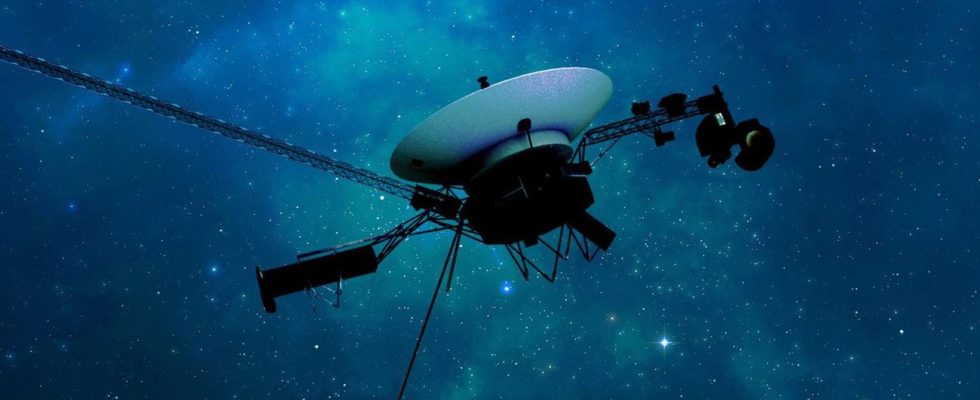After months of disrupted communication, “Voyager 1” – the most distant space probe of all – has sent usable information to Earth again.
“For the first time since November, the NASA space probe “Voyager 1” is providing usable data about the condition and status of its technical systems on board,” said the Jet Propulsion Laboratory (JPL) of the US space agency NASA. Work is underway to ensure that the probe sends scientific data again.
“Voyager 1” 24 billion kilometers from Earth
“Voyager 1” stopped functioning as intended in mid-November last year. There was still a radio signal, but it did not contain any usable data, NASA wrote. Using a complicated procedure, experts ensured that the probe sent information again despite a defective chip. “Voyager 1” is now 24 billion kilometers from Earth and signals take more than 22 hours to arrive.
“Voyager 1” (in German: traveler) was launched on September 5, 1977, and “Voyager 2” on August 20, 1977. Both probes are unmanned. The probes were intended to explore planets in the outer solar system, but ended up flying beyond the boundaries of the solar system.
Temporary communication problems with the probes have occurred frequently. It was only last summer that NASA restored temporarily lost contact with the Voyager 2 space probe after it accidentally oriented its antenna temporarily away from Earth.
© dpa-infocom, dpa:240424-99-792330/2
After months of disrupted communication, “Voyager 1” – the most distant space probe of all – has sent usable information to Earth again.
“For the first time since November, the NASA space probe “Voyager 1” is providing usable data about the condition and status of its technical systems on board,” said the Jet Propulsion Laboratory (JPL) of the US space agency NASA. Work is underway to ensure that the probe sends scientific data again.
“Voyager 1” stopped functioning as intended in mid-November last year. There was still a radio signal, but it did not contain any usable data, NASA wrote. Using a complicated procedure, experts ensured that the probe sent information again despite a defective chip. “Voyager 1” is now 24 billion kilometers from Earth and signals take more than 22 hours to arrive.

